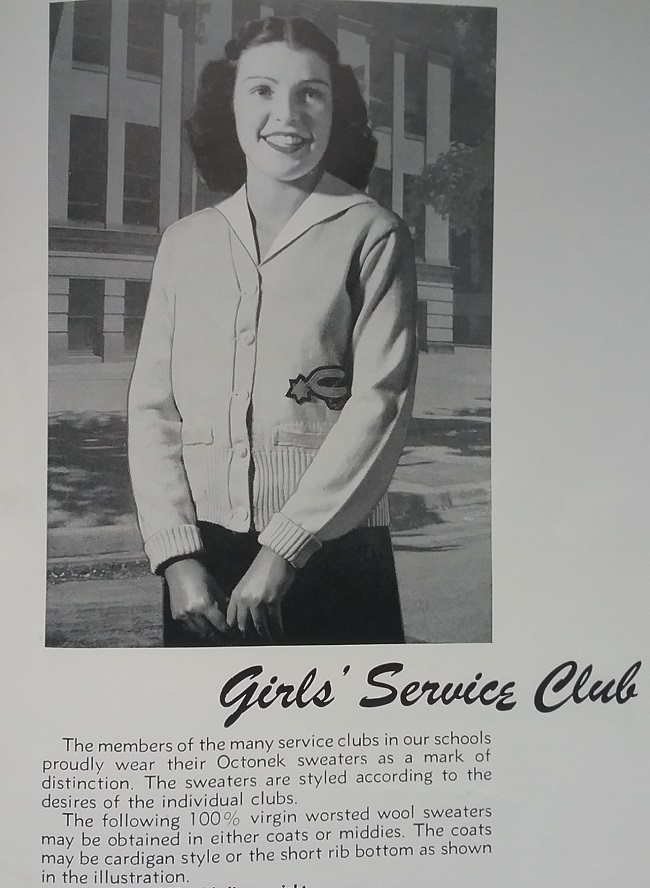
A recent acquisition is this cute little 1920s blouse with an interesting back-story. It wasn’t so much the blouse that sold me on this piece, but rather, the label.

This one ticked several boxes: women’s college related, somewhat local to me, and after digging a bit, sportswear related. And the Deco-ish embroidery didn’t hurt a bit. So what’s the story?

Maryville College is one of the fifty oldest colleges in the country, being founded in 1819 as a Presbyterian seminary. From the beginning the school was racially integrated, until it was forced to segregate in 1901. It began admitting women in the 1860s, and in 1875 granted the first degree to a women in Tennessee. By the 1920s there were more women than men in the college, probably because it offered degrees in education.
In 1921 (or 1920, according to one source) home economics teacher Kathryn McMurray devised a plan to help girls who were not able to afford their college fees to stay in school. She set up a sewing enterprise where students made simple garments that were then sold under the label “College-Maid”. The program started with ten girls, but three years later more than 400 girls were earning money to help pay for their education.
Several types of garments were made by the students. One was the apron, which is the champion of beginning sewing projects. I also found references to house dresses and work dresses, but best of all, by 1926 they were making two-piece pajamas. I am quite sure that my blouse is actually a pajama top.
Ms. McMurray traveled around the country, encouraging women’s organizations and department stores to sell College-Maid products. Women’s groups would have what we today would call pop-up shops to sell the garments for the college. Some department stores advertised the goods as late as 1934. A dress cost $1.95 at that time.

Several years ago I found some pages from a photo album belonging to a Maryville College student.

Ruth, Gert, Mae and Eva had lots of adventures. I can’t help but wonder if any of them worked making College-Maid garments.






























